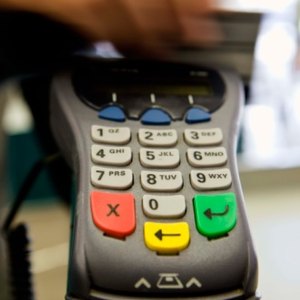
Prepaid cards allow you to pay for the goods and services you are going to purchase in advance. This stops you from obtaining credit card debt because once you have spent the money on your prepaid card, you cannot make any purchases. However, because of this, you must load your prepaid card when your balance gets low. While many banks and lending institutions accept cash to load the card, you may also be able to load the prepaid card with a check as well.
Personal Check
Contact the bank or lending institution that holds your account. The contact information can be located on the back of the card. They will provide a phone number or website address you can visit. Either call or visit the website to understand the policies in regards to personal checks.
Determine what their policies are for accepting personal checks. If you are speaking with a customer service representative, you can ask. If you are on their website, look for a "Frequently Asked Questions" section, or section dedicated on how to load or re-load your prepaid card. This will detail if they accept personal checks. Ask or determine who to endorse the check to and where you need to mail it.
Fill out your personal check. Write in the state, payee information, numerical amount and written amount, then sign it. Place the account number of your prepaid card in the memo section of the check.
Mail the check to the appropriate location. Add a note to the envelope detailing your name, your account number and that you wish to have this money applied to your prepaid card. You may wish to use a tracking service so you know when the check is delivered. These are available for an additional fee through the United States Postal Service.
Check back to see when the money posted to your prepaid card. Some prepaid cards that accept personal checks require a holding period for the check to clear. Once the money clears from your checking account it will be available on your card. If you send a personal check, try to plan ahead so you have enough money on your prepaid card when you need it.
Third Party Government Check
Contact your prepaid card company. Many prepaid card companies will also accept a third party check from the government. For example, if you are on social security, or you receive a tax refund from the IRS, then you can load that money onto your prepaid card without a waiting period since the government backs it. Ask or read about their policies by calling or visiting their website.
Ask who the check must be endorsed to for it to be accepted. Because the check is made out to you, you must then endorse it to the prepaid card company. The company will give you the official name such as "Acme Prepaid Card Bank."
Endrose the check. Flip over the check. On the back where the payer normally endorses the check, write "Pay to the Order of" and then fill in the name give to you in the previous step. This will allow the bank to cash the check that was made to you in your account. Sign the check. Finally, write the account number of your prepaid card underneath your signature.
Mail the check to the prepaid card's contact address. Again, you may wish to add a note giving your name, prepaid card account number, and that you wish to apply this money to your card.
Check to see when the funds have cleared. Depending on the policies of the bank that offers the card, they may or may not place a hold on the check.
Tips
One way to avoid the wait time on a personal check is to obtain a bank check or money. The process is similar to the personal check section. Go into your bank and request a check payable to the prepaid card company in the amount you desire. The money will immediately be withdrawn from your account. Then mail it to the address provided by the company. Since it is backed by the bank, and the funds have already been removed from your account, many prepaid card companies will waive the waiting period, making your funds available upon entry into the system.
References
Writer Bio
Scott Damon is a Web content specialist who has written for a multitude of websites dating back to 2007. Damon covers a variety of topics including personal finance, small business, sports, food and travel, among many others.

